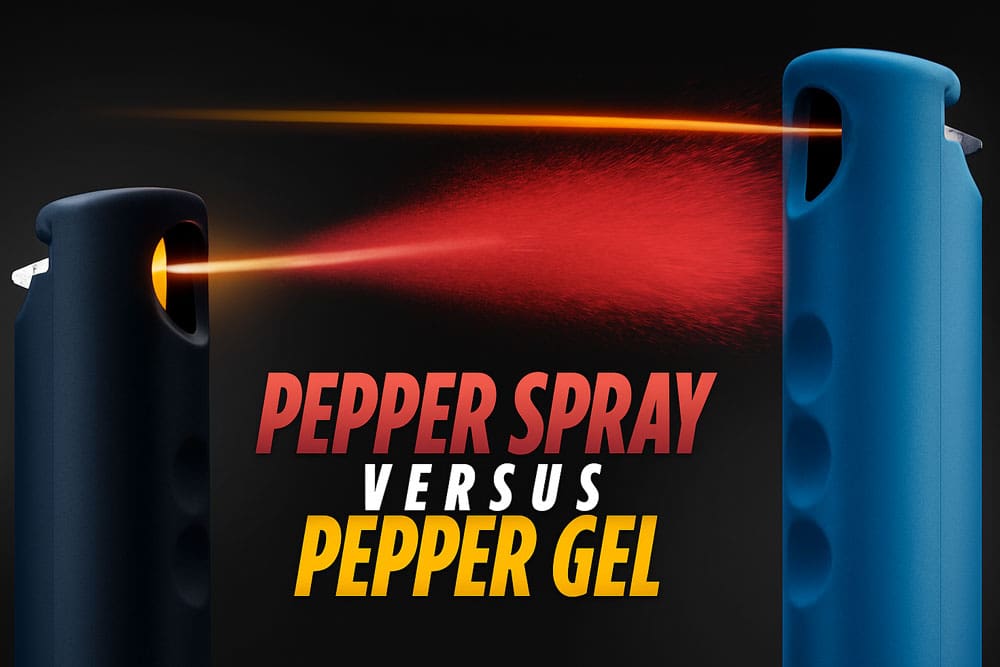Pepper gel is emerging as a more controlled and safer less-lethal alternative to traditional pepper spray, offering enhanced precision while reducing risks to bystanders. Unlike aerosol-based sprays, pepper gel sticks to the target, minimizing airborne exposure and ensuring effective deployment in indoor environments and crowded spaces. This makes it particularly advantageous for security personnel, healthcare facilities, and law enforcement, where maintaining safety without unintended contamination is critical. By advancing the use of pepper gel, organizations can reinforce effective threat management while prioritizing safety, compliance, and de-escalation techniques.

Controlled Dispersion and Environmental Safety
Hospitals rely on finely calibrated HVAC systems to safeguard air quality and patient health. Traditional pepper spray atomizes its contents, which can inadvertently enter ventilation systems and disperse irritant particles beyond the intended target. In contrast, pepper gel’s thicker formulation minimizes aerosolization, ensuring that the chemical irritant remains localized. This precision reduces the risk of collateral contamination in critical care areas, thereby protecting patients and staff from unintended exposure. Notably, research and product developments in the field of non-lethal self-defense have demonstrated that gel formulations, as exemplified by products like Reflex Protect’s Presidia Gel are designed specifically to avoid cross-contamination in enclosed environments.
Enhanced Accuracy and Reduced Collateral Exposure
The physical properties of pepper gel demand deliberate application; its viscosity means that it projects in a more focused, target-specific manner. This controlled delivery requires a higher degree of accuracy during deployment. In practice, security personnel trained in using pepper gel benefit from a marked reduction in inadvertent exposure compared to the broader dispersal observed with pepper spray. Studies and best practice reports in hospital security underscore the importance of minimizing chemical spread in sensitive environments, which aligns with the precision noted in research on the performance attributes of gel-based formulations. Furthermore, a survey of security practices in U.S. hospitals in Sage Journal has highlighted that careful selection and application of force options—including less-lethal chemical agents—can reduce the incidence of secondary exposure risks among patients and staff.
Complementary Less-Lethal Force Options and Comprehensive Training
While pepper gel offers chemical incapacitation with improved targeting, hospitals have also explored a range of other devices, such as expandable batons, electrical control devices (tasers), and manual restraint techniques, to broaden the continuum of force options available to security personnel. Each tool comes with a unique set of operational benefits and drawbacks. For example, batons and electric devices provide non-chemical options but require close proximity and specialized training to avoid excessive force. The integration of multiple less-lethal options is consistent with the guidelines proposed by occupational safety experts, which call for a spectrum of alternatives to address varied encounter dynamics in healthcare environments. Comprehensive training programs that include scenario-based drills on the use of pepper gel have also shown promise in mitigating risks by ensuring that security officers are well-versed in its correct deployment and limitations.
Policy Implications and Best Practices
Best practices in hospital security increasingly recommend the selection of less-lethal tools that limit the potential for collateral harm, especially given the dual challenges of protecting patients and minimizing environmental contamination. Regulatory frameworks and industry guidelines, such as those outlined by the Occupational Safety and Health Administration (OSHA) and the International Association for Healthcare Security and Safety (IAHSS), emphasize the importance of reducing unintended exposure to chemical agents in patient-centric environments. The evidence supporting the transition to controlled alternatives like pepper gel is further reinforced by both academic research and industry product developments that document its efficacy and lower risk profile compared to traditional pepper spray.
Conclusion
In sum, the controlled dispersion, improved accuracy, and reduced collateral exposure offered by pepper gel make it an excellent alternative for hospital security in situations where de-escalation has failed. When integrated into a broader continuum of force options, including physical devices and manual restraint techniques, pepper gel helps ensure that interventions remain proportionate and safe. Given the inherent complexities of healthcare environments, a dual approach that combines technological innovation with comprehensive training is essential for advancing patient and staff safety.
Additional Considerations
Security leadership might also consider conducting internal reviews of incident data to better understand how different force options perform in the field. Emerging research on gel formulations and evolving training protocols continues to influence best practices, ensuring that future iterations of less-lethal tools further balance efficacy with safety. This integrated approach from equipment selection to user training remains key to advancing hospital security while upholding the highest standards of patient-care integrity.
About the Author
Jeffrey C. Kearnan is the founder of Kearnan Consulting Group, LLC, bringing over 36 years of professional experience in law enforcement, security consulting, and emergency management. His expertise spans threat assessments, policy development, tactical training, and crisis response, making him a sought-after expert witness in litigation involving security procedures and use-of-force policies.
Kearnan specializes in expert witness consultation for excessive force complaints and security litigation, frequently working with attorneys, municipalities, and county governments on legal disputes related to police practices, policies, and procedures. His cases often involve 1983 civil rights claims, where he provides fact-based analysis to assess the lawfulness, necessity, and appropriateness of operational responses. His expert opinions are developed using verifiable discovery evidence, ensuring credibility and adherence to well-established police practices.
His consulting firm focuses on protecting, planning, and preparing organizations, including churches, schools, and businesses, against manmade and natural disaster scenarios. His work emphasizes risk mitigation, security strategy, and proactive safety planning, ensuring institutions are equipped to handle evolving threats.

